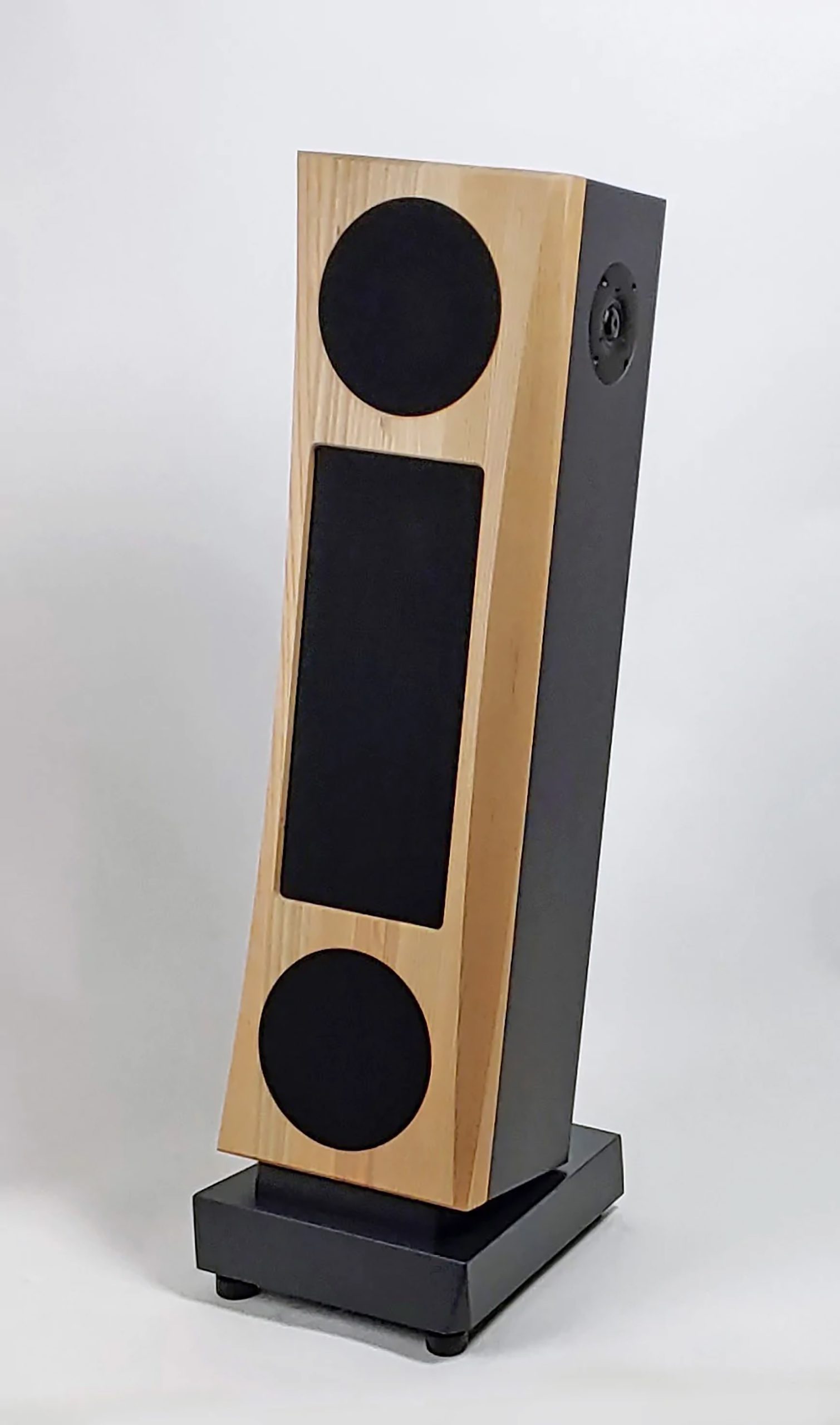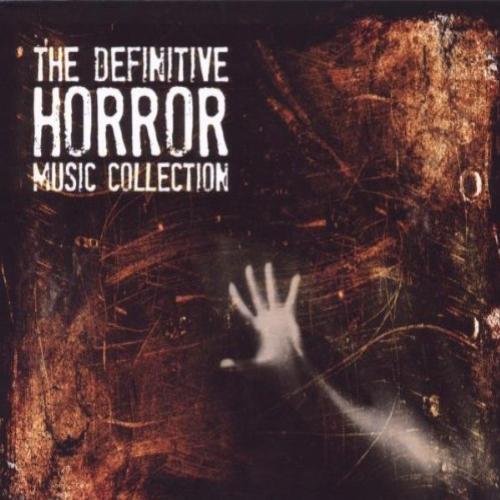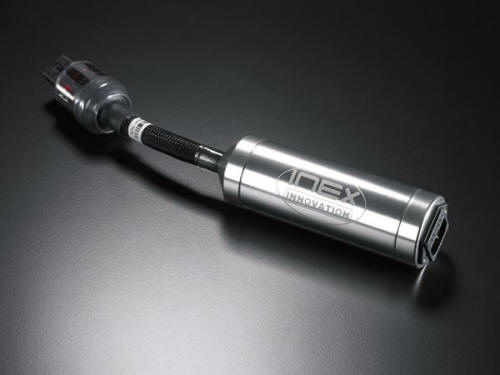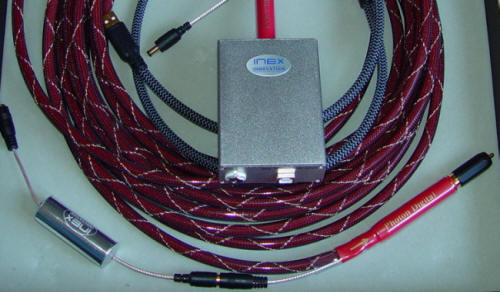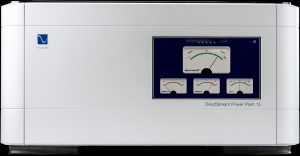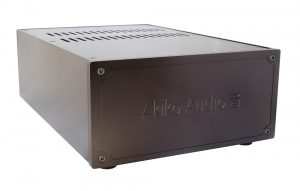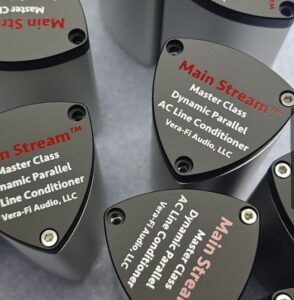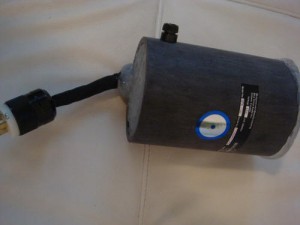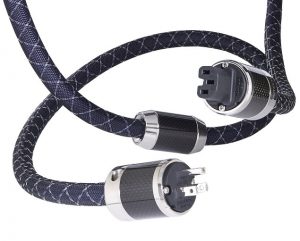
Audience has made a name for itself over the years by producing very fine interconnect cables, phono cables, speakers, and power chords well as the Teflon Aura-TO (Teflon) capacitors. The star of their product line, which has always received rave reviews, has been their power line conditioners.(1) The Audience power line conditioners are not inexpensive. The basic six outlet aR6 retails for US$3495. The aR6-TS with the Teflon capacitor upgrade raises the price to US$4995. The aR6-TSS upgrade, which includes the Teflon capacitors and a special filter increases the price to US$5995. Upgrading the power cord on the units can cost an additional US$1660(2) for the top of the line Audience Au SE powerChord. Based on the reviews and the aR6 and its big brother the aR12 continually making the A list of various audiophile magazines, the aR6 and the aR12 are worth the money. That is fine if you have a lot of money to spend on your system. However, US$3495 to US$7655 can buy some really good amps, pre amps, speakers, etc. Thus, spending that kind of money on a power line conditioner is usually very low on the average audiophile's list of gear to buy. And I admit I was one of those with a power line conditioner low on my audio wish list.
The electric power that my local utility sends me is actually pretty good. Unlike most audiophiles, there is not a really noticeable difference in sound between playing music during the day versus playing it late at night. Also, we are still using some of the incandescent light bulbs that came with our house when we bought it 22 years ago. According to an friend who is an electrical engineer, the long life of the incandescent bulbs is because we don't get a lot of power surges coming through the power lines. These two items led me to believe that my electricity was pretty good and I didn't need anything except a surge protector to protect my equipment. For that duty I used an old Sound Application XE 12 (cryoed) power distribution unit. The XE 12 was a highly rated power line conditioner at the turn of the century.
While talking to John McDonald, CEO of Audience, about finalizing the details of doing a review of their new phono cable (review upcoming), we started talking about the new addition to their line of power line conditioners, the aR2p-TOS. According to John, this new unit was an attempt to make the benefits of Audience's power line conditioner technology more affordable and thus, help those on a more modest budget to achieve better sound.
The aR2p comes in three versions: the basic aR2p for US$695, the aR2p-TO which uses the Aura-TO (Teflon) capacitors for US$1595, and the aR2p-TOS which uses the Aura-TO (Teflon) capacitors and a special filter for $2075. To me US$2075 is a lot different from US$7665 and thus sounded very interesting. John was gracious enough to allow me to review the aR2p-TOS.

The aR2p line of power conditioners, as you can tell from the photo, looks very different from the other members of the Audience power conditioner family. For one, the unit plugs directly into the wall socket. No power cord is needed which means a lower price. There are also some differences on the inside of the aR2p-TOS. One of the other differences is the fact that the two outlets on the aR2p-TOS are not isolated from each other. On all of the other Audience power line conditioners the individual sockets are isolated from all of the other outlets to prevent cross-talk between the devices plugged into the unit. The aR2p-TOS also does not have the copper plate and star grounding used in the more expensive units. The lack of a copper buss bar is because one is not needed due to the simple circuit used in the aR2p-TOS. If you don't need it, don't put it in. It keeps costs down and less components almost always means better sound. Star grounding is omitted because you can not implement it with only two outlets, a minimum of three outlets is required. Another difference between the aR2p-TOS is that it does not have the dual pole circuit breaker that is used in the big boys. It has only a single pole magnetic circuit breaker, which should be adequate to protect against power surges. The last major difference is that the aR2p-TOS uses the OFCC (oxygen free continuous cast) copper wiring 10 awg that is used in the Audience AU 24 SE powerChords. Its big brothers use the high purity copper wire 10 awg that is used in the standard Audience powerChords.
When I received the aR2p-TOS I plugged it into a wall socket for 15 days in order for the passive circuitry to burn in. The Teflon Aura-TO capacitors need time to settle in. Once the 15 days were over, I immediately plugged my DAC into the aR2p-TOS and sat down to listen. With the opening chord my jaw dropped to the ground (figuratively). The sound stage was slightly wider and the sides rather than curving into the center forming a semi circle went straight back many feet before they started to curve in. The music was arising from a black background. I was hearing subtle sounds that I had never heard before. The music was smoother and more natural sounding. Wow. Things can't get any better than this can they? Yes, they could. I had borrowed an aR6-TS (with standard power cord) from a friend. I plugged the DAC into the aR6-TS. My jaw again dropped. Everything the aR2p-TOS did, the aR6-TS did better. Slightly wider sound stage, the walls of the sound stage went straight back even further before curving in. The music was silky smooth rising out of a black, black background and sounding so much like acoustic music. It was an amazing sound. I never, ever imagined that my system could sound so good. I guess my electricity is not that good after all.

For the next couple of weeks I plugged my DAC, phono stage, pre amp, and mono block amps into the aR2p-TOS and the aR6-TS. During that time I played many digital and analog recordings from all sorts of genres. Each piece of equipment sounded so much better being plugged into the aR2p-TOS and even better when plugged into the aR6-TS. I had expected the source components, DAC, phono stage, and pre amp, to be the most improved by the power line conditioners. That was true. However, even the sound of my solid state mono block amps were noticeably improved. I even plugged the captive power cords from my Janszen zA2.1 electrostatic speakers into the aR2-TOS. Again the sound was slightly improved.
Having now become acquainted with the sonic changes created by both the aR2p-TOS and aR6-TS it was time to try to quantify the differences between the two units. I decided to do A-B-A comparisons between the aR2p-TOS and the aR6-TS using the phono stage and pre amp since this way I was comparing the sound change of two components rather than just one. That would hopefully, make the changes more apparent. I decided to compare the six attributes that seemed to be most effected by the two units. These attributes were:
1. Sound Stage - width and depth of stage, and whether the sound stage was a rectangle or a semi-circle
2. Blackness - did the noise floor drop and allow the music come out from a silent background
3. Clarity - were the sounds distinct and were subtle, low volume sounds readily audible,
4. Smoothness - was the sound smooth and silky, without grain
5. Naturalness - did the music sound like live acoustic music
6. Perceived Loudness - When the noise floor is dropped the music seems louder even though the volume is the same
For the test I used four different LPs:
1. The Secret Policeman's Ball, Island 12 WIP 6598, track 1, Pinball Wizard played live by Pete Townshend with acoustic guitar
2. Impex reissue of Columbia MS 6043, New York Philharmonic, Leonard Bernstein conducting from the keyboard, Shostakovich Piano Concerto No. 2, first movement
3. 45rpm reissue of Fleetwood Mac, Rumors, Second Hand News track
4. 45rpm reissue of Audio Fidelity, St. James Infirmary with Louie Armstrong
In the testing the pre amp and phono stage the power cords would both be switched at the same time between the aR2p-TOS and the aR6-TS. To make it more interesting I would not only be listening to the pre amp and phone stage plugged into the aR2p-TOS and the aR6-TS, but also into the Sound Application XE 12 (cryoed) and also directly into the wall socket. For each of these recordings I would do sufficient A-B-A comparisons between the four 'units' to be able to assign points on a ten point scale for each of the six attributes on each of the four music selections. The aR6-TS was automatically assigned 10 points in each category. Yes, there are better power line conditioners than the aR6-TS, including Audience's aR6-TSS. However, I did not have them on hand for reference. The lowest point on the scale, one point, was for the sound of the turntable we listened to in elementary school. The turntable came in a box like that used for pro audio, the speaker was in the lid, the tone arm was the cheapest available, and the stylus was a metal needle.
Every person has a preference in the sound they listen to. Some people are obsessed with sound staging. Everything else is secondary to them. Some people want minute detail more than anything else. Thus, most people would want to weight the six attributes so that the attributes that they are most interested in would receive greater weight. Unfortunately, since you can not please all of the people all of the time the test results have not been be weighted. It should also be noted that the points assigned are relative not absolute. If you were doing the listening in your own system you might award the points very differently.
After performing all of the comparisons I averaged the scores. Please remember that this is my ranking of the sound of these four 'units' in my audio system. The results could be very different if I was listening through your audio system. With that caveat, the average total score of the six attributes on the four music selections for each 'unit' was:
aR6-TS 10.0 points
aR2p-TOS 7.9 points
Sound Application XE 12 6.0 points
Directly into Wall Socket 4.0 points
These results make sense to me. My electricity is not heavily contaminated with noise and surges and my equipment does have power regulation and power supplies built into them. Thus, 4 points seems appropriate for plugged directly into the wall sockets. The Sound Application XE 12 in its day was one of the very best power line conditioners. Technology has moved on considerably in the last 15 years as is shown by the numerous upgrades made to the XE 12 over the years since then. Despite its age, plugging the power cords into the XE2 should yield better sound than plugging the power cords directly into the wall and it was.
The average scores by attribute for the aR2p-TOS are as follows:
1. Sound Staging 7.25
2. Blackness 7.00
3. Clarity 8.00
4. Smoothness 7.00
5. Naturalness 8.50
6. Perceived Loudness 9.75
These scores also seem reasonable to me. The aR2p-TOS is definitely not its big brother, the aR6-TS. However, it comes closer than it should for its price of US$2075. With the aR2p-TOS you are getting 75-80% of the sound improvement of the aR6-TS for roughly 40% of the price. Not a bad deal.
Another benefit of having a passive power line conditioner like the Audience power line conditioners is that not only the devices plugged into the power line conditioner benefit, but so can other devices plugged into the same electrical circuit. A simplified view of how most passive power line conditioners work is that they have electronic components, usually capacitors, in parallel with the power signal. The capacitors remove noise from the power signal and shunt it to ground. The size of the capacitor determines which frequency range of the out of band noise will be shunted to ground. The cleaned power signal exits the power line conditioner, flows through the devices plugged into it and then flows back to the circuit which the power line conditioner is plugged into. This cleaned power can influence the sound of devices further down stream. I proved this to myself by having nothing plugged into the aR2p-TOS and switching it off and on. My amps and electrostatic speakers are plugged into the same circuit as the aR2p-TOS, only further downstream. As I moved the power switch on the aR2p-TOS from 'off' to 'on' the sound quality improved. And when the aR2p-TOS was turned off, the sound quality lessened. The benefit provided to the amps and speakers was less than the benefit when I had the amps and speakers plugged directly into the aR2p-TOS. However, the effect of having the aR2p-TOS plugged in and turned on, on the devices downstream was noticeable.
CONCLUSION
Pros
The aR2p-TOS gives a lot of value for the money. It definitely makes substantial improvements to the sound quality of an audio system. How much of an improvement will depend on your system and power situation. However, if you are thinking about acquiring an affordable power line conditioner you have to put the aR2p-TOS on your short list. Highly Recommended.
Cons
The only criticism that I have of the aR2p-TOS is the size of its grounding pin. I have Oyaide wall sockets. The hole for the ground pin on the Oyaide sockets is too small to accept the ground pin on the aR2p-TOS. This will probably not be a problem for very many people. However, if you have a non-standard wall receptacle you might want to check to see if the aR2p-TOS's ground pin will fit. If not, you can always plug a power distribution unit into the wall socket and then plug the aR2p–TOS into the power distribution unit which is what I did. Roger S. Gordon
Audience
[email protected]
www.audience-av.com
760-471-0202
My audio system for this review:
Digital:
Music Server - Intel NUC, i5 processor, 16 GB RAM, JRiver software
NAS - Synology 212se connected to NUC by CAT6 ethernet cable
DAC - Lynx Studio Hilo ADC/DAC with analog volume control
USB to S/PDIF - INEX USB/S/PDIF Photon 2
Analog:
Turntable - Nakamichi TX-1000
Cartridge - Van den Hul Colibri, wood body, platinum wire
Phono Cable - Audience AU 24 SE
Phono Stage - Herron AudioVTPH-2
Pre Amp - Herron Audio VTSP-3A
Amps - Herron Audio M1A mono blocks
Speakers - Janszen zA2.1
(1) If you don't believe me go to Audience's website and look at the reviews: http://www.audience-av.com/conditioners
(2) The Au24 SE powerChord normally retails for US$2400.




